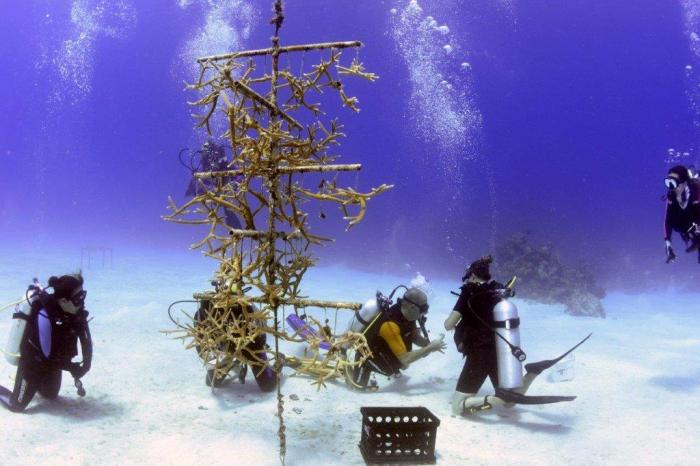In addition to displaying living marine organisms and promoting environmental education for the care, conservation and rational use of the resources and species of that environment, the National Aquarium of Cuba (ANC) projects, with remarkable results, in the field of research.
The heyday of various studies in the past two decades has led to the recording of more than 40 new species to Cuban waters and science, along with the introduction of new management and care techniques for marine mammals, under controlled conditions.
Similarly, it was possible to describe the abundance and distribution of dolphins Tursiops truncatus In the seas surrounding our country, and achieve breeding in captivity of various threatened species, among which are the attractive seahorses.
According to M.Sc. Maria de los Angeles Serrano, ANC Director, the Foundation is currently leading a rocky coral cultivation and propagation project for Cuban coral reef restoration, in which specialists from Guanacapipes National Park are also participating. National Center for Protected Areas, Marine Science Institute, Florida Aquarium and The Nature Conservancy, USA.
He noted that for Cuba, it is of paramount importance to have strong and healthy coral reefs, bearing in mind that this ecosystem protects beaches, seagrass and mangroves from the harmful effects of erosion and tides caused by extreme meteorological events, hurricanes in particular.
It also constitutes the natural habitat of dissimilar and valuable species (fish, crustaceans and mollusks), serves as a haven and breeding space for many aquatic organisms and plants, and is an attraction for meditative diving.
Work with many hands
Angels Serrano confirmed that today they have three farms, on which four types of corals have been grown and propagated: Acropora cervicornisAnd the Acropora PalmataAnd the Orbicella faveolata And the Diploria labyrinthiformis. Two are located in the Guanahacabibes National Park, and the third is on the coast of Havana, very close to the ANC. A fourth is planned in Playa Coral, Matanzas.
“First, young coral fragments are transplanted into the nursery or farm to create new colonies in ideal conditions conducive to their optimal growth, with minimal predation, disease and other influences.”
When they reach a suitable size between 20 and 40 cm, the transplanted parts are cut off. He said that these are transmitted to the natural reefs of the degraded areas and there they are fixed on the rocky substrate through various farming techniques.
Among the three used in ANC, the highest fragment survival levels were obtained using cement (94.9%), while implantation with nails showed 76.8%, using ropes barely reached 2.5%.
Regarding the advantages of this practice, Maria de los angeles serrano explained that, of course, the formation of the reef depends on the arrival of the larva that settles and begins to grow, while with the applied method the survival prospects are much higher, by depositing larger portions that are already relatively developed .
An essential step is the appropriate selection of the coral species to be used in the restoration procedures, depending on the specific environmental conditions of the sites chosen to carry out the work.
As expressed by the director of the ANC, the best results are observed in coral restoration in the isolated platform area north of the aquarium.
Despite the significant contribution of coral reefs to the environment (they are a natural home to 25% of marine life), coastal protection, tourism and fishing, coral cover has decreased by about 50% worldwide over the past four decades.
The main causes of mortality are the increased frequency of weather systems, powerful tidal generators, the emergence of bleaching events, diseases, and increased ocean acidification, all linked to global warming, along with pollution, overfishing, and other human actions.

“Social media evangelist. Student. Reader. Troublemaker. Typical introvert.”





:quality(85)/cloudfront-us-east-1.images.arcpublishing.com/infobae/D3V3FEQRKQ4HID3I3SLSUAXZGQ.jpg)

More Stories
They will bring science and technology closer to girls and boys
Valdepeñas' Plaza de España is hosting the CSIC science fair this weekend
New medicine for the genius man